History and Heritage of the Village of Prévenchères |
Prévenchères is nestled in the foothills of the Cévennes and boasts a rich history dating back to the Middle Ages. Its strategic location made it an important crossing point, especially for pilgrims heading to Saint-Gilles and for commercial exchanges. The village is traversed by the Voie Régordane (GR700), an ancient transhumance and trade route that crosses the Massif Central, linking Auvergne to Languedoc. The Saint-Pierre-aux-Liens church, a Romanesque building whose foundations may date back to the 12th century, is distinguished by its characteristic comb-shaped bell tower, typical of Languedoc Romanesque art. Surrounding the church, the narrow streets and schist houses, a material typical of the region, give Prévenchères an authentic charm.
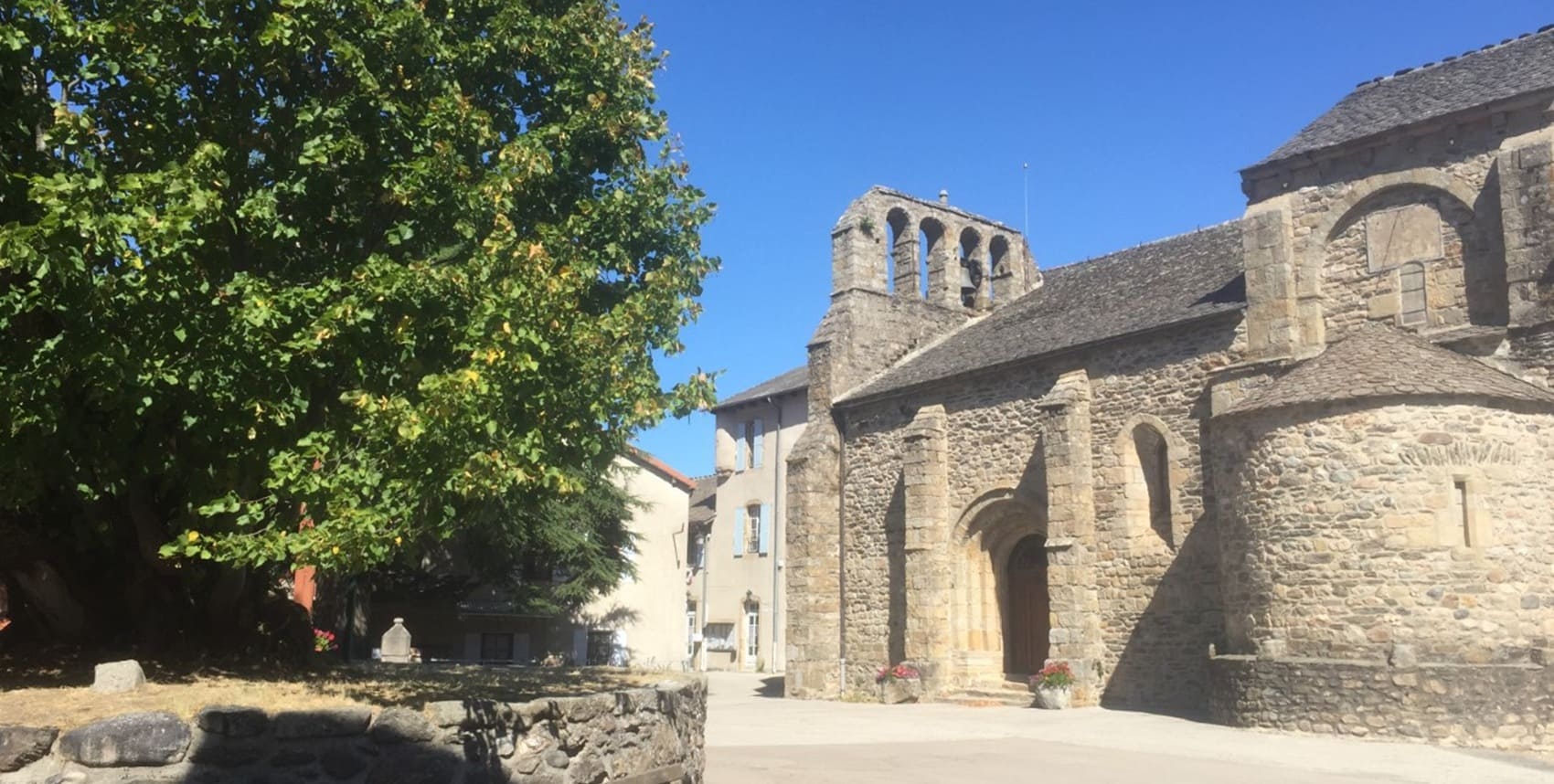
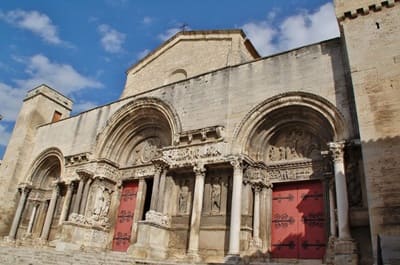 The etymology of the name Prévenchères dates back to the Middle Ages. The name is associated with the ecclesiastical history of the region, dominated by the Abbey of Saint Gilles. The first known mention of Prévenchères, in the form “Sancti Petri de Prevencheriis,” dates from a papal bull by Pope Calixtus II in 1119, confirming the possessions of the Abbey of Saint Gilles. The name may thus derive from the presence of a priory or a church dedicated to Saint Peter (Sancti Petri) in the region. Over time, the name evolved into Prévenchères as we know it today.
The etymology of the name Prévenchères dates back to the Middle Ages. The name is associated with the ecclesiastical history of the region, dominated by the Abbey of Saint Gilles. The first known mention of Prévenchères, in the form “Sancti Petri de Prevencheriis,” dates from a papal bull by Pope Calixtus II in 1119, confirming the possessions of the Abbey of Saint Gilles. The name may thus derive from the presence of a priory or a church dedicated to Saint Peter (Sancti Petri) in the region. Over time, the name evolved into Prévenchères as we know it today.
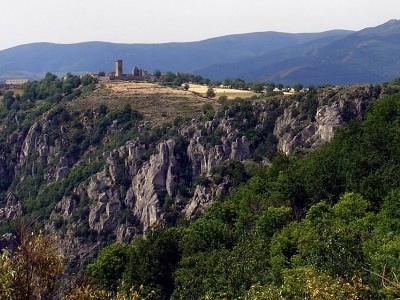 In the verdant setting of Lozère, Prévenchères stands as a sentinel of time, with its roots deeply anchored in medieval history. The Régordane route, a path for merchants and pilgrims, traversed these lands, connecting Le Puy-en-Velay to Saint-Gilles-du-Gard, the stage for the exploits of Guillaume d’Orange and a passage for those heading to the tomb of Saint Gilles or towards the Black Virgin of Puy.
In the verdant setting of Lozère, Prévenchères stands as a sentinel of time, with its roots deeply anchored in medieval history. The Régordane route, a path for merchants and pilgrims, traversed these lands, connecting Le Puy-en-Velay to Saint-Gilles-du-Gard, the stage for the exploits of Guillaume d’Orange and a passage for those heading to the tomb of Saint Gilles or towards the Black Virgin of Puy.
The first known mention of the parish of St Pierre de Prévenchères can be found in a bull from Pope Calixtus II in 1119 confirming the possessions of the Abbey of St Gilles: "Sancti Petri de Prevencheriis cum villa" (St Peter of Prévenchères and its domain).
Indeed, the parish of Prévenchères owes its creation to the Abbey of Saint Gilles south of Nîmes, a jewel of spirituality and ecclesiastical power, which extended its influence, its grand prior designating the prior of Prévenchères, often a learned monk from its own cloister, who was then the owner of all the territory between Upper Lot and Vivarais.
This considerable abbey in the High Middle Ages possessed large flocks of sheep that spent the hot summer months in the highlands of southern Central Massif, easily accessible via the ancient Régordane path. Thus, a priorate was created in Prévenchères with successive annexes in Puylaurent. St Victorin of Villefort, St André Capcèze, Concoules, Cubières, St Jean de Chazorne, etc., annexes that later became parishes, dependent on the priorate of Prévenchères.
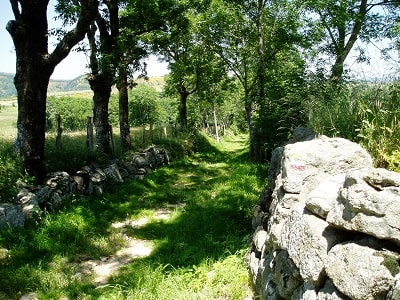 Some
families clustered around the priorate to cultivate the land left by
the monks: the nucleus of the future parish. In the first half of the 16th century,
the commendation system changed the relationship between the parish and the prior
who no longer resided on site. He collected the rents from the domain and the
tithes, responsible for (meagerly) supporting the monks and the head of
the parish. The church was common to both the clergy and the parish; it had
at that time two bell towers: one called the monks to services, the other
regulated the life of the parish.
Some
families clustered around the priorate to cultivate the land left by
the monks: the nucleus of the future parish. In the first half of the 16th century,
the commendation system changed the relationship between the parish and the prior
who no longer resided on site. He collected the rents from the domain and the
tithes, responsible for (meagerly) supporting the monks and the head of
the parish. The church was common to both the clergy and the parish; it had
at that time two bell towers: one called the monks to services, the other
regulated the life of the parish.
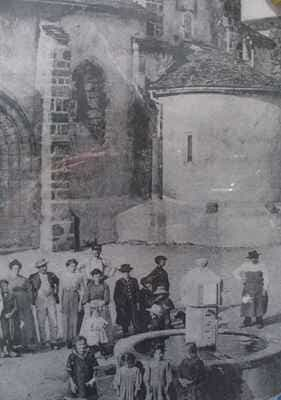 The commune was under the control of the fortified village of La Garde-Guérin, perched about 900 meters above sea level and overlooking the gorges of Chassezac. This village, classified among the most beautiful villages in France, enjoys an exceptional geographical position.
The commune was under the control of the fortified village of La Garde-Guérin, perched about 900 meters above sea level and overlooking the gorges of Chassezac. This village, classified among the most beautiful villages in France, enjoys an exceptional geographical position.
The ecclesiastical domination was total, both in religious and civil matters. In 1498, a ruling by the Parliament of Toulouse forced Auguste Richard to resell the lordship of Prévenchères to Bernard de Cénaret for 1700 golden écus. At this price, he had the right to administer justice.
In the 16th century, the religious wars were a great trial: in 1570, eleven priests and monks were massacred in Prévenchères by Huguenots who occupied Langogne. The priory and the church were then set on fire. It took more than fifty years and the pacification of the region to rebuild the nave and the priory, approximately in its current state.
In 1721, the plague caused great devastation along the Régordane Way. Prévenchères was spared; on October 16 of that year, the population gathered in Judge Bastide's house and pledged to dedicate August 16 of each year as a day of thanksgiving with a solemn mass.
This "judge's house" still exists with its mullioned windows from the 16th century. It was the residence of the judge appointed by the commendatory prior, who exercised, through his intermediary, the rights of high, middle, and low justice over the parish. The meetings did not take place in this house, but outdoors under the centuries-old lime tree that is in the church square, which at the time leaned against the wall of the cemetery.
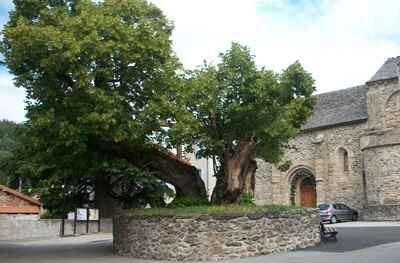 The revolution of 1789 was not too violent for the parish, but it allowed, through a redistribution of land, the release of the important properties of the priory (the best lands) whose revenues went outside; this allowed for the economic and human development of the entire young community. The vibrant Christian community of Prévenchères today is attached to the parish of Villefort.
The revolution of 1789 was not too violent for the parish, but it allowed, through a redistribution of land, the release of the important properties of the priory (the best lands) whose revenues went outside; this allowed for the economic and human development of the entire young community. The vibrant Christian community of Prévenchères today is attached to the parish of Villefort.
A judge, appointed by the lord, rendered justice. The one who served in 1736 was named Étienne Bastide. His Renaissance house, with its mullioned windows, still exists on the village square.
The parish of Saint-Pierre de Prévenchères is mentioned for the first time in a bull from Pope Calixtus II dating from 1119, which confirms the possessions of the Abbey of Saint-Gilles. Until the beginning of the 16th century, Prévenchères remained a simple priory dependent on the said abbey. The population reached a peak of 1,068 inhabitants in 1831.
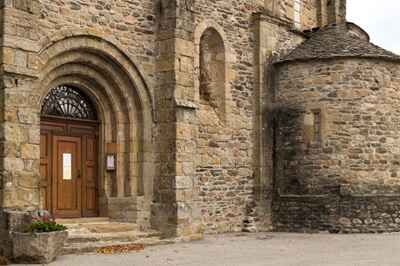 In the heart of Prévenchères, the judicial past comes to life around a centuries-old lime tree, under which judges, in the shade of its rustling leaves, rendered justice. This is not just an ordinary tree, but a symbol of justice and community, planted, it is said, by Sully to celebrate the birth of the future Louis XIII. Its robust trunk and spreading branches have witnessed the passing of seasons and centuries, remaining an unwavering meeting point for the inhabitants.
In the heart of Prévenchères, the judicial past comes to life around a centuries-old lime tree, under which judges, in the shade of its rustling leaves, rendered justice. This is not just an ordinary tree, but a symbol of justice and community, planted, it is said, by Sully to celebrate the birth of the future Louis XIII. Its robust trunk and spreading branches have witnessed the passing of seasons and centuries, remaining an unwavering meeting point for the inhabitants.
A few steps away stands the ancient 12th-century church, a gem of Romanesque art, whose broken arch vault was rebuilt in the 17th century. The choir, the beating heart of the edifice, is a festival of granite sculptures, where every detail is a prayer petrified in stone.
The neighboring churches, like those of La Garde-Guérin or Puylaurent, share this same architectural language, a dialect of granite and faith that unites the region in silent brotherhood. It is deeply marked by the wars of religion. Traces can be found on the northern wall of the nave where recent restoration work reveals the original architectural decor.
The nave's vault was reconstructed in the 17th century as a broken arch. The wealth of decoration is concentrated in the choir and the transept, whose structure is composed of columns grouped in bundles falling at the four corners. The sculpted decoration in granite is very diverse. The lighting concentrated in the choir is discreet and conducive to prayer. Grisaille windows would be welcome and would soften the sadness of the cement coating on the interior walls.
Former holiday hotel with a garden along the Allier, L'Etoile Guest House is located in La Bastide-Puylaurent between Lozere, Ardeche, and the Cevennes in the mountains of Southern France. At the crossroads of GR®7, GR®70 Stevenson Path, GR®72, GR®700 Regordane Way, GR®470 Allier River springs and gorges, GRP® Cevenol, Ardechoise Mountains, Margeride. Numerous loop trails for hiking and one-day biking excursions. Ideal for a relaxing and hiking getaway.
Copyright©etoile.fr